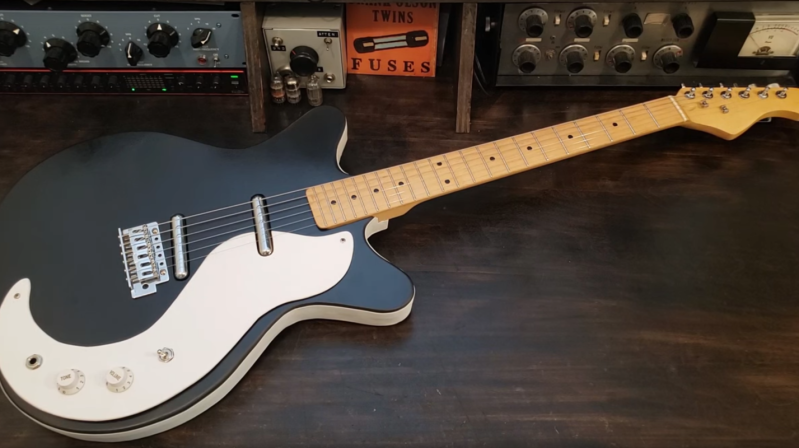Anyone who’s ever played guitar to at least the skill level required to form a terrible garage band knows the names of the most legendary guitars. The driving sound of the Gibson Les Paul played by Jimmy Page, the upside-down and smooth Fender Stratocaster from Jimi Hendrix, or the twangy Rickenbacker made famous by George Harrison are all lusted-after models. The guitar that [Frank] really wanted was a Danelectro DC59 and since they’ve been steadily creeping up in price, he decided to build his own.
The body of the clone guitar is hollow and made from effectively scrap wood, in this case plywood. As the original guitars were in fact famous for using the least expensive materials possible, this makes it a great choice for a clone. [Frank] made the guitar using almost exclusively hand tools and glued everything together, but did use a few donor parts from a modern Stratocaster-type guitar. With most of the rough shape of the guitar finished, it was time to add the parts that make the guitar sound the way that a real Danelectro should: the lipstick-style pickups. He purchased these completely separately as they are the most important part to get right to emulate the tone and feel of the original.
With everything finally soldered and assembled, [Frank] got right to work recording a sample audio track which is included at the end of the video. It certainly sounds like the original to our untrained ears, and for around $100 it’s not a bad value either. If you’d like to see a guitar built from the ground up without using another as a clone, take a look at this build which brings a completely original guitar into existence, entirely from scratch.
















My ’64 Danelectro, made in Neptune, NJ, had top and back body panels made of Masonite. The original bridge was a piece of rosewood with a long fret for a saddle. It sat on the top, mounted on 3 set-screws. The neck fingerboard was rosewood but straight as an arrow. The lipstick pickup was weak.
Somehow the whole mess played good and sounded great.
That’s a really nice build, and I especially appreciate how he did it without a lot of expensive tooling. That’s very much in keeping with the low-budget vibe of the originals. I have a guitar-playing friend who had the 1457 Amp-in-Case model with a case that was in shambles and he wanted me to re-build it. However it was so beyond saving that I decided to build a whole new case to house the amp and guitar, which I documented on Instructables. It would be a great follow-on project to this one. https://www.instructables.com/Amp-in-Case-Reproduction/
Yes for simple tools but a sturdy workbench or table is part of this skill. Hard to watch that cafe table bounce whilst sanding the edge, least if one sets two drinks on it.